Hardy annuals are some of the hardest-working, most productive plants in the late-spring and early-summer cutting garden. They are the first annuals to bloom in the spring, and their ability to withstand cold temperatures, thrive with minimal care, and produce abundantly for weeks from a single sowing make them an indispensable addition to the cut flower garden.
Unlike tender annuals, such as cosmos and zinnias, which resent the cold, hardy annuals thrive in cooler temperatures. And if planted in autumn and given time to develop healthy roots, they can explode into bloom as soon as early spring, at a time when you need flowers the most.
Success with hardy annuals comes down to timing and variety selection. When you plant and what you plant (some varieties are more cold tolerant than others) are both determined by your growing zone and your first and last frost dates.
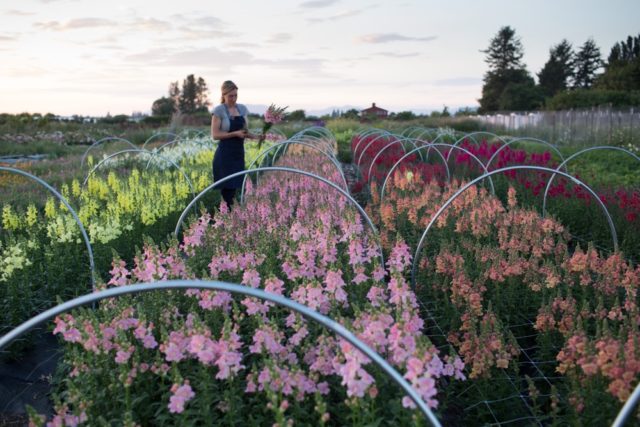 Autumn and late winter/early spring are the two main planting windows for hardy annuals.
Autumn and late winter/early spring are the two main planting windows for hardy annuals.
Autumn planting will reward you with the earliest blooms. This time of year, you can sow many varieties of hardy annual seeds (depending on your zone) directly into prepared planting beds, in full sun, 4 to 8 weeks before the first frost. That means you don’t have to fuss with filling seed trays and babying seedlings for months before transplanting them outside.
However, if you have a lot of weed pressure in your area (like we do) or prefer to get an even earlier start, you can start hardy annuals in trays in late summer/early autumn (about a month or two before your first frost), giving seedlings enough time to bulk up before planting into the garden.
Whether you direct-seed or start in trays, get hardy annuals going early enough so that they can build a strong root system before the cold winter weather sets in.
 If starting in late winter/early spring, you can direct-seed hardy annuals into your prepared garden beds. If you plan to do this, make sure to prepare some ground in the autumn and cover it with a thick layer of mulch or landscape fabric so it’s ready when the time comes.
If starting in late winter/early spring, you can direct-seed hardy annuals into your prepared garden beds. If you plan to do this, make sure to prepare some ground in the autumn and cover it with a thick layer of mulch or landscape fabric so it’s ready when the time comes.
Alternatively, you can start your seeds indoors in trays, 8 to 10 weeks before your last spring frost. Be sure to read our resource How to Start Flowers from Seed.
While hardy annuals can handle cold weather, if you are starting them indoors they still need to be transitioned from their warm, protected environment to the harsher outdoor temperatures.
 Every climate is different, so you’ll want to experiment a little and find the hardy annuals that perform best for you. I recommend starting with some of the hardiest varieties and then expanding from there.
Every climate is different, so you’ll want to experiment a little and find the hardy annuals that perform best for you. I recommend starting with some of the hardiest varieties and then expanding from there.
Below, you can read more about some of my very favorite hardy annual varieties and why I love them. The first group is the hardiest and can handle colder temperatures. The second group is considered semihardy, which means these plants need winter protection (from a caterpillar tunnel or frost cloth) below USDA zone 7.
Hardiest varieties (can handle colder temperatures)
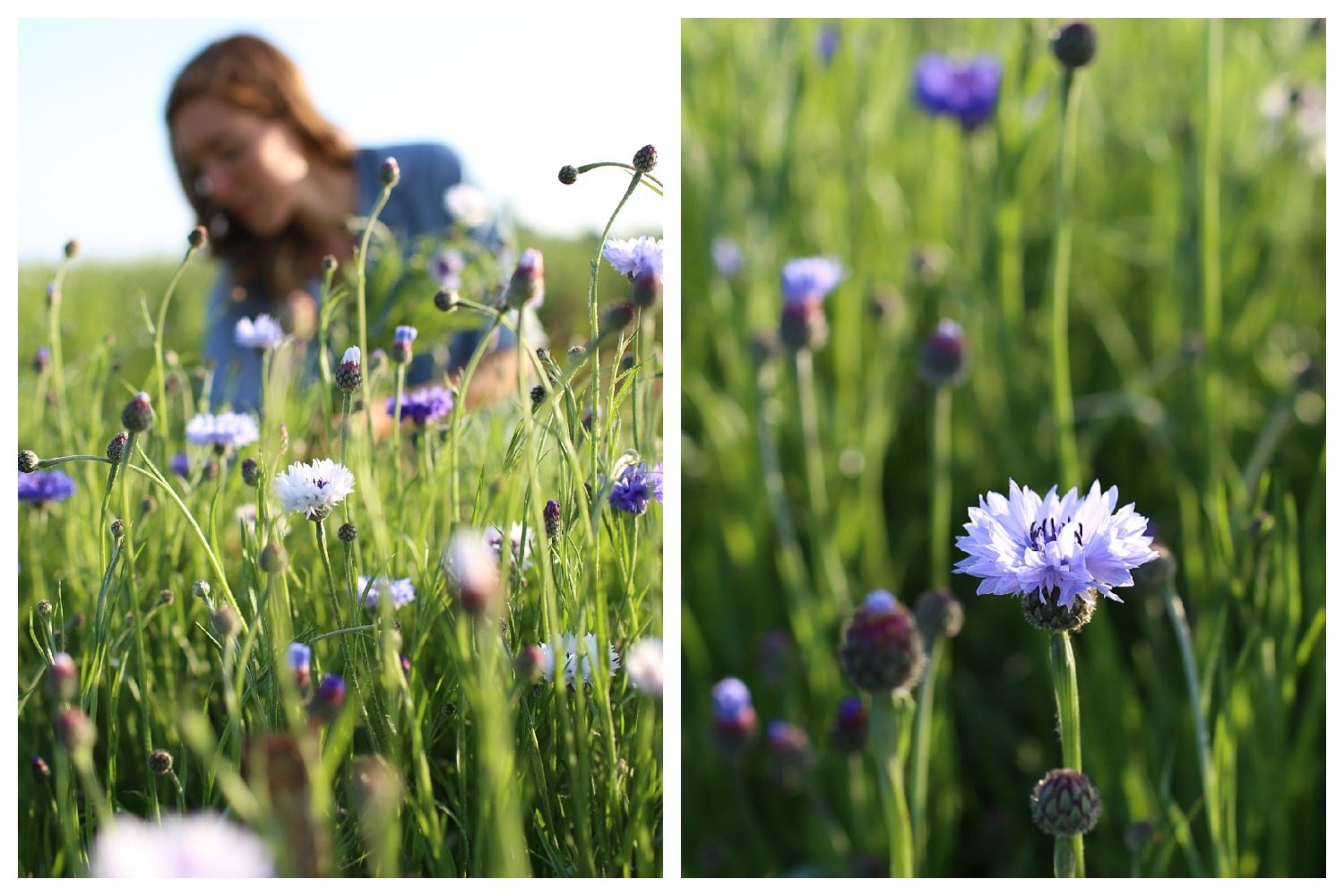 Bachelor’s buttons
Bachelor’s buttons
Bachelor’s buttons are a great choice for beginners. Pollinators love them, and if you harvest regularly, the plants will flower over a long period of time.
‘Classic Romantic’ is the sweetest mix of blush, pink, white, and bicolors, which is great for bouquets and wedding work. ‘Classic Magic’ is an eye-catching mix of black, deep plum, and purple-and-white bicolor blooms; it’s on our must-grow list. And ‘Classic Fantastic’ (pictured above) is a mix of ethereal sapphire, pale blue, and cool-hued bicolors, shades that combine to resemble the midnight sky.
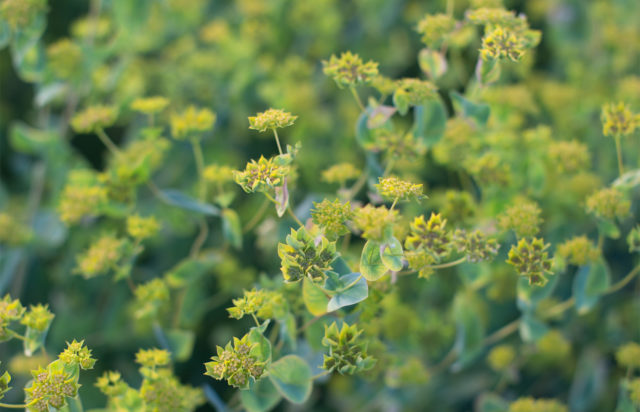 Bupleurum
Bupleurum
Bupleurum (pictured above) makes a wonderful filler that adds sparkle and interest to early-summer arrangements. I love to combine the airy stems with brilliant jewel tones or simple, clean whites and greens. For an extended harvest, sow successions of seeds every 2 to 3 weeks.
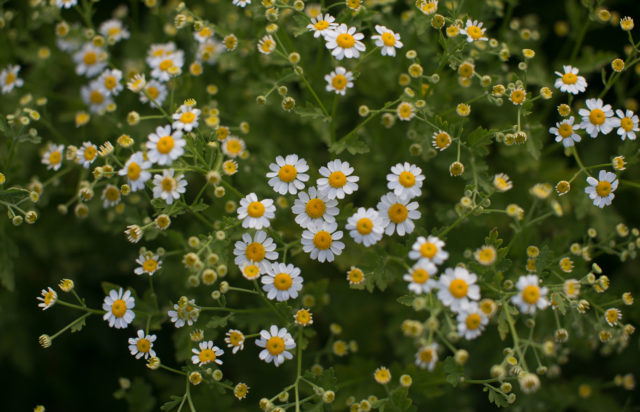 Feverfew
Feverfew
Feverfew is one of the hardest-working plants in the cutting garden and will reward you with sprays of blooms that make a wonderful bouquet filler. ‘Vegmo Snowball’ has white button flowers that reveal soft, creamy centers. Ripe flowers are perfect for wire work. ‘Vegmo Single’ (pictured above) is smothered in the most adorable, tiny, daisy-like flowers. I relied on this variety as a staple ingredient in our market bouquets for more than a decade. Plants have a branching habit and will often produce a second flush of blooms if picked hard.
 Larkspur
Larkspur
Larkspur (pictured above) comes in a rainbow of colors and can even be dried for later use. Because larkspur is extremely cold tolerant, it can be planted in autumn in even the coldest climates. For a continued harvest, sow seed in autumn and then, in late winter, every 3 to 4 weeks starting as early as the soil can be worked, up to the last spring frost date.
Seed can be tricky to germinate, so pop your packets of seeds in the freezer for a week or two before planting, and then they will sprout readily.
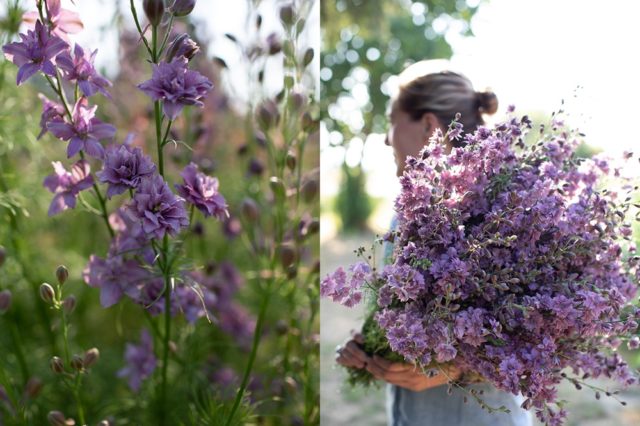 One of my absolute favorites is ‘Earl Grey’ (pictured above). This incredible, unique variety has long been a spring cutting garden staple. Its giant flower spikes are smothered in the most exquisite dusty metallic purple-gray petals that are like nothing else on the market. Florists fight over it, gardeners love it, and there never seems to be enough to go around. A must-grow!
One of my absolute favorites is ‘Earl Grey’ (pictured above). This incredible, unique variety has long been a spring cutting garden staple. Its giant flower spikes are smothered in the most exquisite dusty metallic purple-gray petals that are like nothing else on the market. Florists fight over it, gardeners love it, and there never seems to be enough to go around. A must-grow!
 The ferny stems of ‘White Cloud’ (pictured above), a gorgeous airy variety, explode into sprays of delicate white, orchid-like blooms. This hardworking filler adds a lovely country charm that’s great for mixed bouquets and arrangements. You’ll want loads of this variety, so be sure to succession-plant.
The ferny stems of ‘White Cloud’ (pictured above), a gorgeous airy variety, explode into sprays of delicate white, orchid-like blooms. This hardworking filler adds a lovely country charm that’s great for mixed bouquets and arrangements. You’ll want loads of this variety, so be sure to succession-plant.
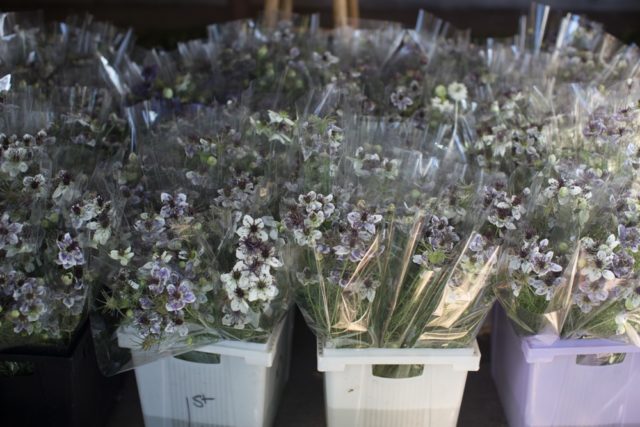 Love-in-a-mist
Love-in-a-mist
While this plant looks quite fragile, it is actually one of the hardiest early bloomers around. In addition to producing unique lacy, star-shaped flowers in a mix of blues, plums, and whites, it also forms football-shaped seedpods in green, chocolate, and even stripes once the flowers have faded. The pods also dry beautifully. This is truly a hardworking garden addition.
One of the most productive varieties is ‘Cramer’s Plum’. Its branching stems are loaded with dozens of fluffy white blooms, and the plum-colored pods are great to use either fresh or dried.
 Our Starry Night Mix (pictured above) combines several of my favorites, including ‘Delft Blue’, ‘Midnight’, and ‘African Bride’, which produce lavender-dusted, royal blue, and white blooms, all with spidery black centers. When left on the plant, the flowers form dramatic black seedpods that add a unique textural element to any bouquet.
Our Starry Night Mix (pictured above) combines several of my favorites, including ‘Delft Blue’, ‘Midnight’, and ‘African Bride’, which produce lavender-dusted, royal blue, and white blooms, all with spidery black centers. When left on the plant, the flowers form dramatic black seedpods that add a unique textural element to any bouquet.
 Orlaya
Orlaya
One of the prettiest, most delicate fillers for late-spring and early-summer bouquets, orlaya (pictured above) is smothered in a mass of lacy white umbels that mix well with anything. As the flowers fade, they form green seed heads loaded with star-shaped pods. It’s a true garden workhorse; the more you cut it, the more it blooms.
Semihardy varieties (need winter protection below USDA zone 7)
 Bells of Ireland
Bells of Ireland
Bells of Ireland (pictured above) is a cutting garden staple and one of the finest annual foliage plants you can grow for mixed bouquets. Plants are heavily branched, producing a bumper crop of tall, lime-green spires adorned with bell-shaped flowerlike bracts. You can remove the leaves and dry the bract-covered stems for use in fall arrangements.
Plants are slow to emerge from seed; it helps to freeze the seeds for 1 to 2 weeks before sowing.
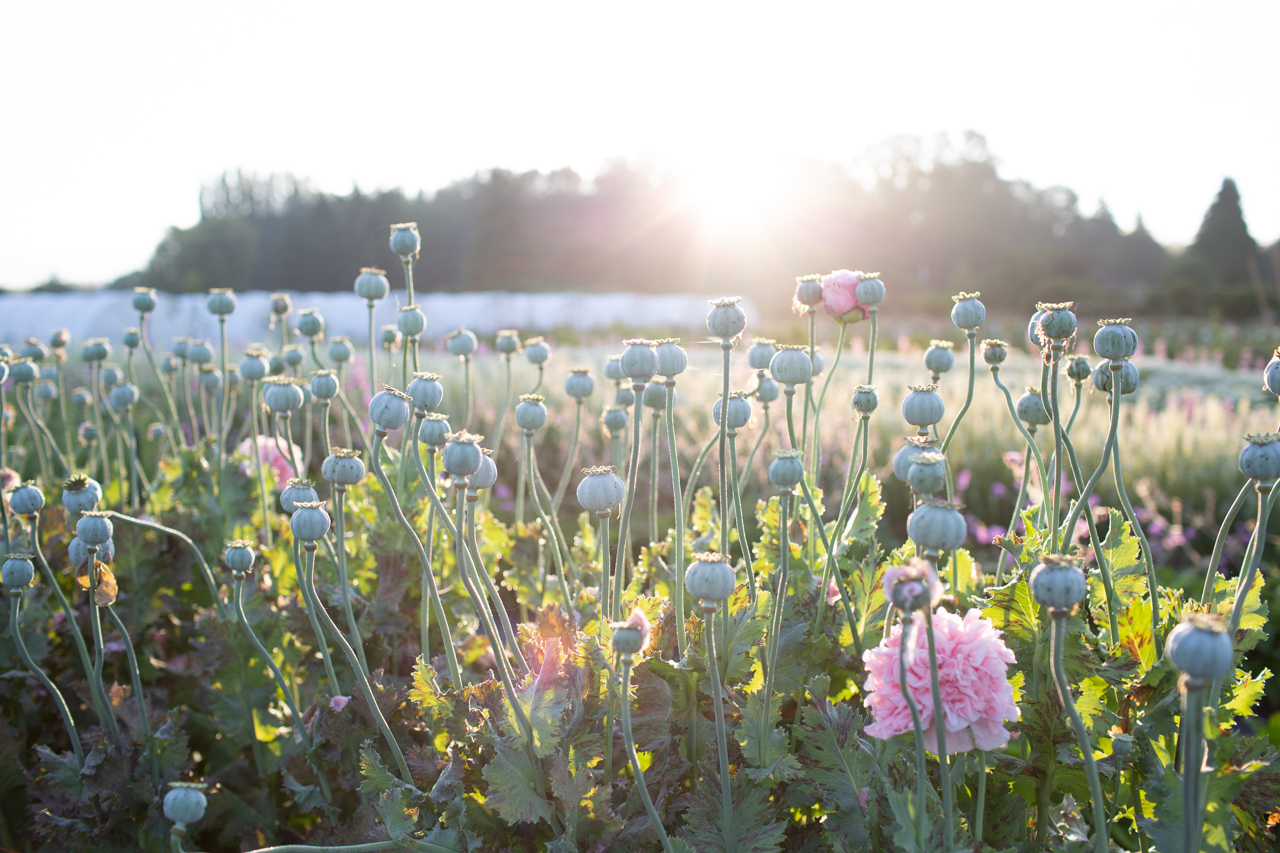 Breadseed poppies
Breadseed poppies
Grown primarily for their decorative seedpods, breadseed poppies are easy to grow and make a wonderful addition to any garden. After flowers fade, they leave behind beautiful seedpods that add textural interest, both fresh and dried.
I’ve been saving the seed for ‘Pink Peony’ (pictured above), originally gifted to me by my neighbor, Louise, for over 10 years. Ultra-feminine, massive flower heads look like upturned petticoats. Though flowers are packed full of petals, their stems are strong enough to support the weight.
‘White Frills’ glows in the evening garden, with petals that have the dainty texture of shredded coconut atop a cupcake. At the opposite end of the color range, the plum and red petals of ‘Black Beauty’ look as if they belong to an exotic winged bird; they bloom on towering plants.
‘Rattle Poppy’ is a long-flowering, drought-tolerant poppy that produces huge decorative seedpods that are as large as limes. The giant pale lavender petals of this beauty have dark grape-purple centers. 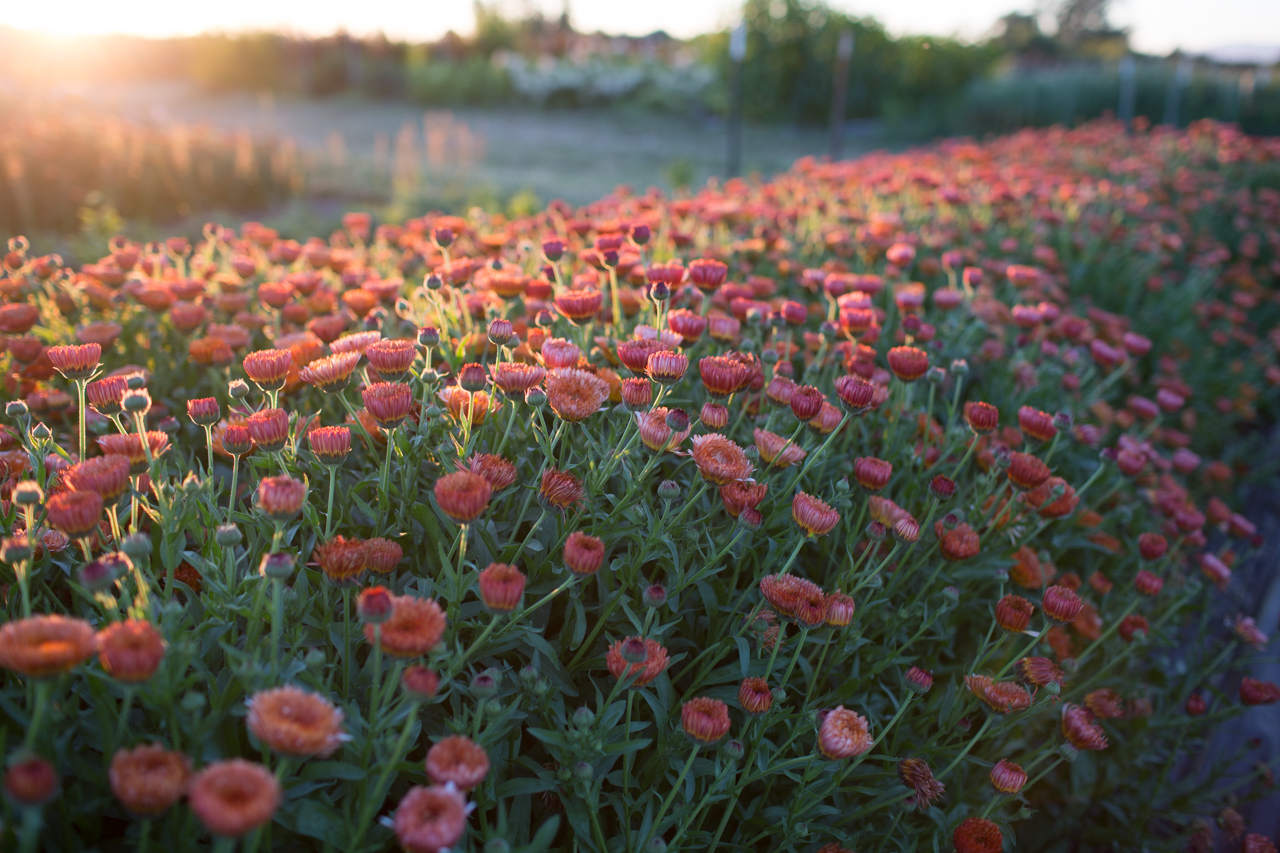 Calendula
Calendula
These versatile flowers are extremely easy to grow and require very little care. They are fast to flower, blooming just 2 months from planting. Calendulas make great bouquet additions and are also edible—fresh petals can be used for salads or frozen in ice cubes for summer drinks. Dried petals are a popular addition to salves and lotions. One of my very favorites is ‘Zeolights’ (pictured above) because its warm peachy flowers look as if they are glowing in the vase. I consider it a must-grow!
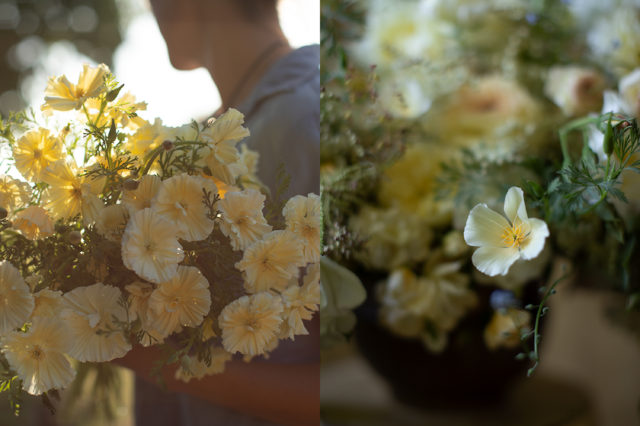 California poppies
California poppies
While not actually poppies at all, California poppies are a versatile, easy-to-grow, drought-tolerant group of plants that bloom all summer long. They are well suited to small spaces and can be either direct-seeded or started indoors and planted out as soon as the weather warms in the spring.
Like other poppies, these beauties self-seed and will pop up everywhere, even in the cracks of the pavement.
In addition to the bright orange native variety that grows wild throughout the southern and western U.S., there are a handful of new cultivars that are as beautiful as they are hardworking.
I love ‘Thai Silk Pink Champagne’ because its silky petals start out peach and fade to the color of vintage lace, a hue that reminds me of my grandmother’s church slip. And we’ve dubbed ‘Thai Silk Appleblossom Chiffon’ the poor man’s rose. Glaucous, lacy foliage reveals a profusion of crimped, creamy rose petals lightly brushed with cranberry—similar in coloring to ‘Distant Drums’ roses. Both varieties are great for wedding work.
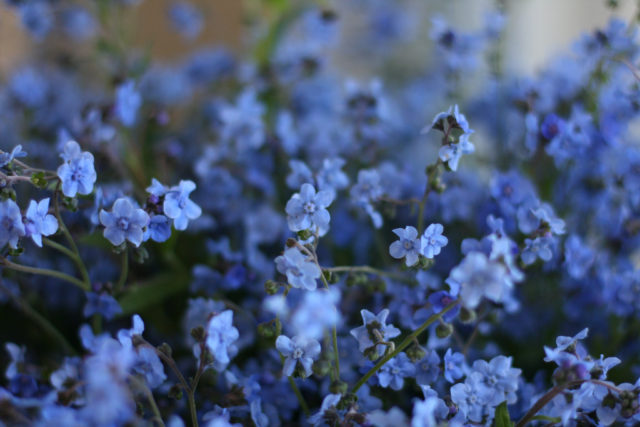 Chinese forget-me-nots
Chinese forget-me-nots
Unlike traditional biennial forget-me-nots, which require a full year to bloom, Chinese forget-me-nots can be grown as an annual crop and flower just 3 months from sowing. ‘Blue Showers’ (pictured above) produces an abundance of tall, delicate sapphire-smothered stems that look incredible en masse and mixed into arrangements. ‘Mystic Pink’ has a similar growth habit but produces delicate cotton candy-pink stems.
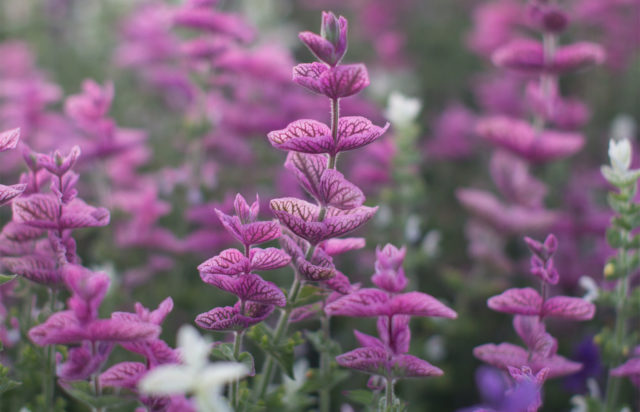 Clary sage
Clary sage
Easy to grow, long flowering, and loved by pollinators, this versatile plant is great cut fresh or dried. Clary Sage Tricolor Mix features long spikes of vibrant, showy bracts with distinctive veining in a mix of pink, white, and deep purple flowers. They smell great too!
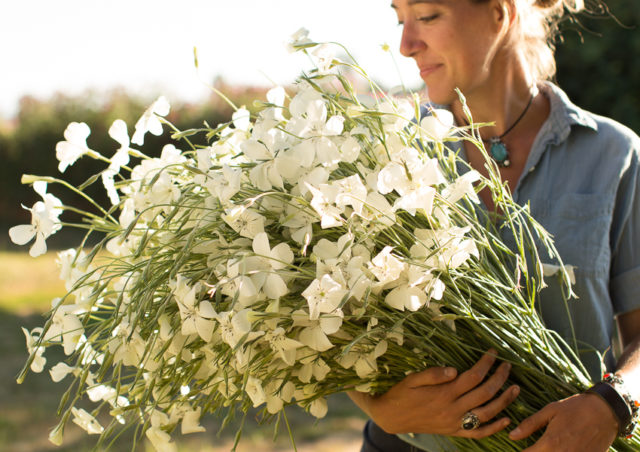 Corn cockle
Corn cockle
These flowers remind me of a tiny ballerina in a wind-up music box. Pointed, tightly swirled buds unfurl to reveal ethereal, feather-light blooms. The variety ‘Ocean Pearls’ (pictured above) features clean white flowers that turn slightly downward with tiny tan freckles. Plants are very easy to grow and produce tons of flowers that dance in the slightest breeze.
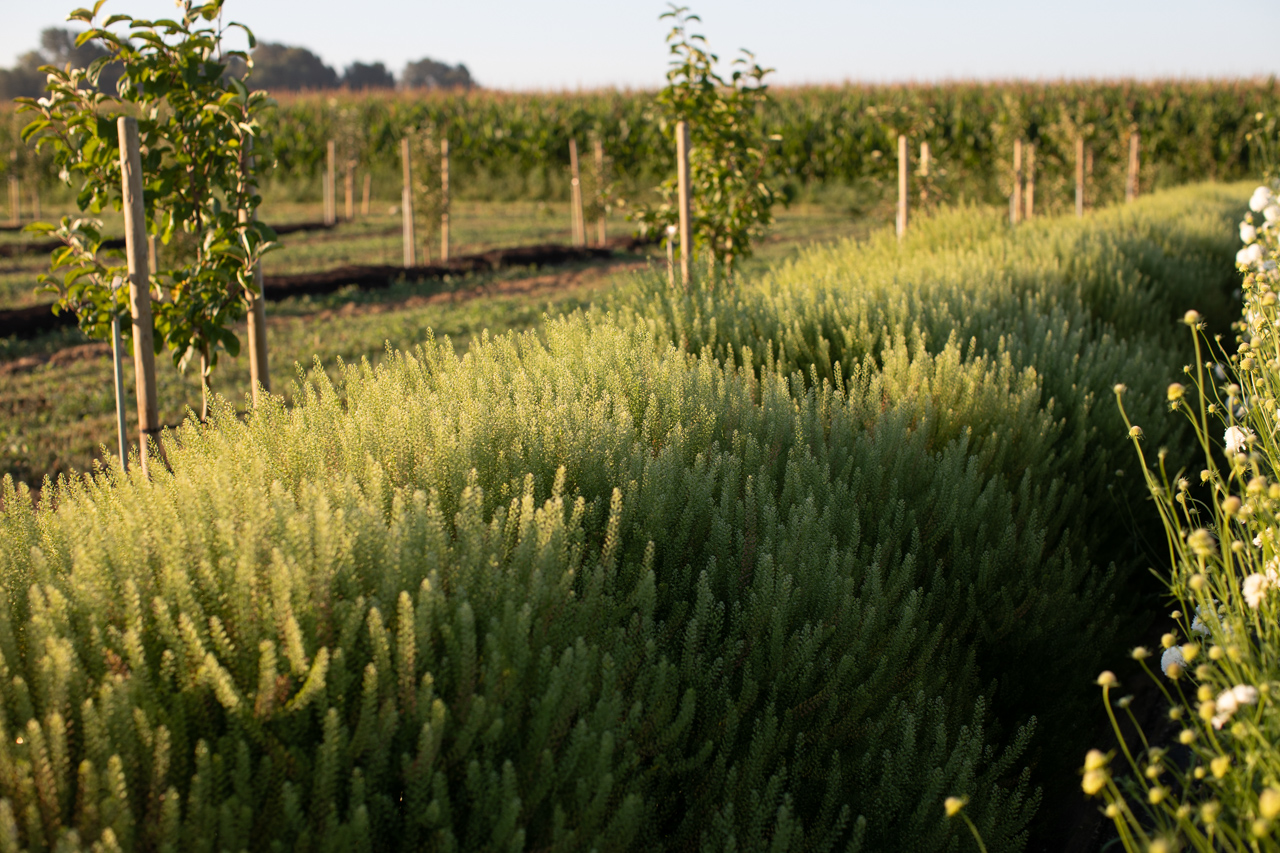 Cress
Cress
This fast-flowering filler is a must-have for mixed bouquets and intricate handiwork, such as boutonnieres and flower crowns. The tall, sturdy stems are smothered in beautiful silvery seedpods—like tiny textural beads—that aren’t prone to wilting or shattering.
Producing a bumper crop just 2 months from sowing, this garden workhorse is a real winner. Cress is extremely quick to germinate, so I direct-seed it in the garden every 2 to 3 weeks from my last spring frost through early summer for a steady supply.
In addition to using cress in fresh bouquets, you can easily dry stems to use as a fantastic addition to autumn bouquets and wreaths. To dry, hang bunches upside down in a warm, dry place out of direct sunlight.
A friend gifted me seeds from her ‘Pennycress’ years ago and it has become one of my very favorites. Legend has it that this variety has been growing in the Skagit Valley since the year I was born. The bright, clean, apple-green stems are well branched and loaded with round, textural seedpods. As seed heads mature, they turn the color of wheat.
This is a staple crop for me, and I sow it multiple times over the season for a steady supply. Pods come on all at once, so it’s perfect for succession-planting. ‘Pennycress’ dries very well, changing from green to glowing yellow and eventually to tan. It’s very easy to save seed, too.
‘Emerald Beads’ is an extremely heavy producer with more delicate and more numerous pods than other varieties. The branched stems are upright with a graceful wave, making them useful and versatile in bouquets and arrangements.
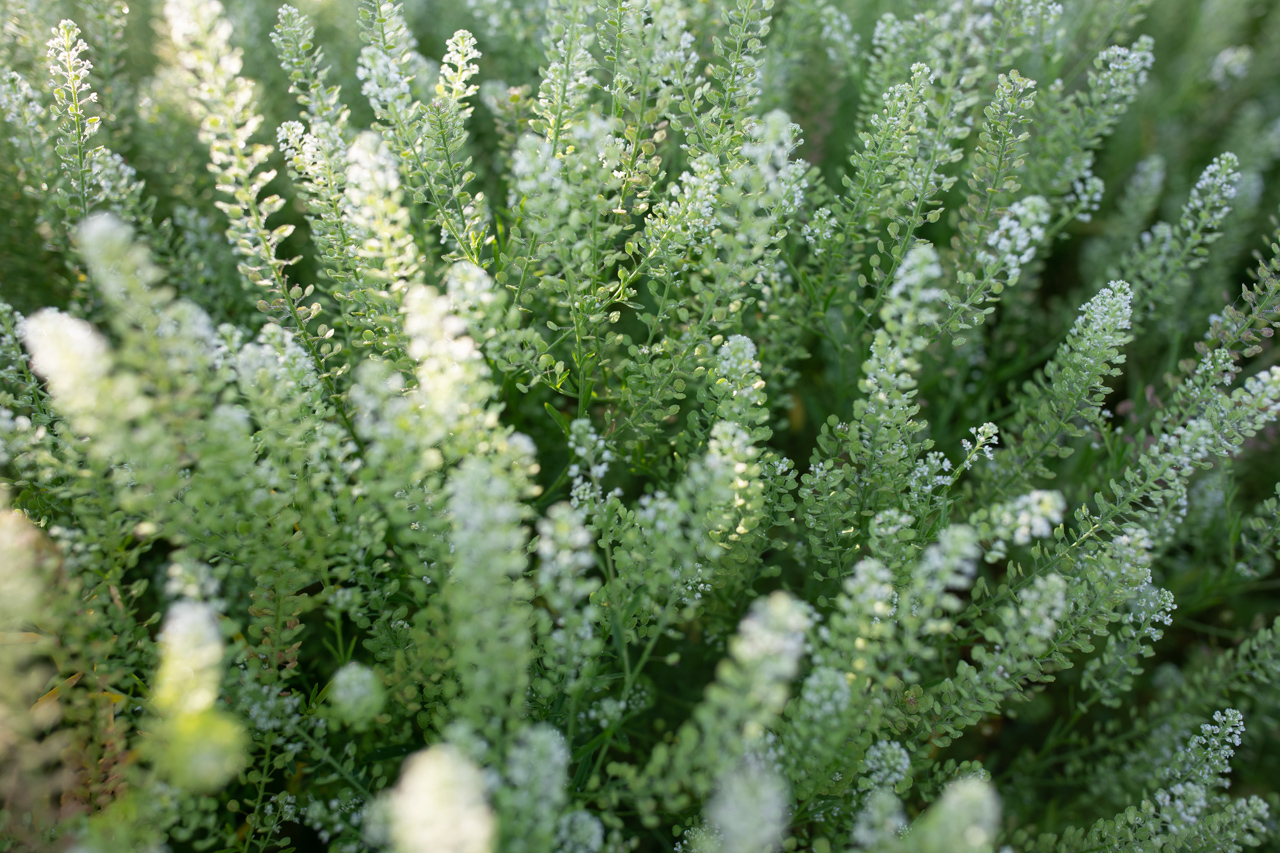 ‘Green Dragon’ (pictured above) has a heavily branching habit, producing 6 to 12 airy stems from a single plant. Stems are covered in tiny apple-green, disk-shaped seeds. Plants are durable and age well, turning pink, gold, and green together and transitioning well into autumn.
‘Green Dragon’ (pictured above) has a heavily branching habit, producing 6 to 12 airy stems from a single plant. Stems are covered in tiny apple-green, disk-shaped seeds. Plants are durable and age well, turning pink, gold, and green together and transitioning well into autumn.
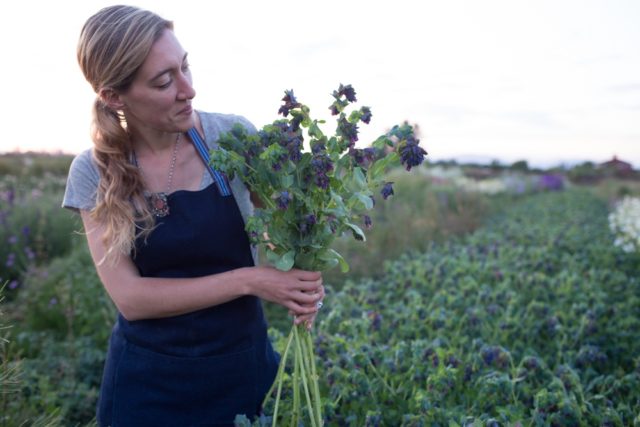 Honeywort
Honeywort
Also known as Cerinthe, honeywort (pictured above) is one of the most uniquely colored flowers I’ve ever grown. A single stem in full bloom can be silver, blue, purple, and green all at the same time. Featuring gracefully arching stems with nodding blooms, these plants are easy to grow and produce a bumper crop for many weeks. Honeywort combines beautifully with most other flowers, it makes a great bouquet filler, and bees love it!
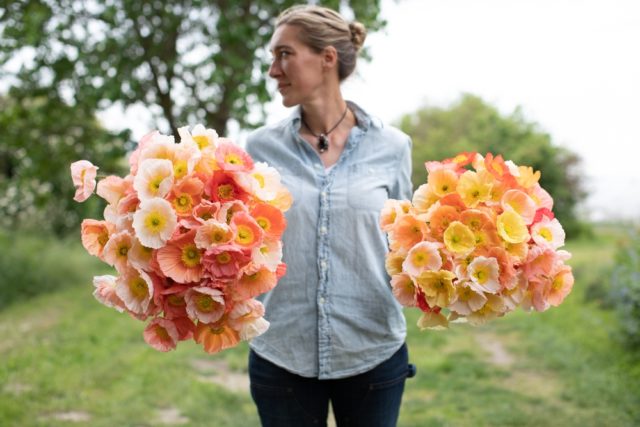
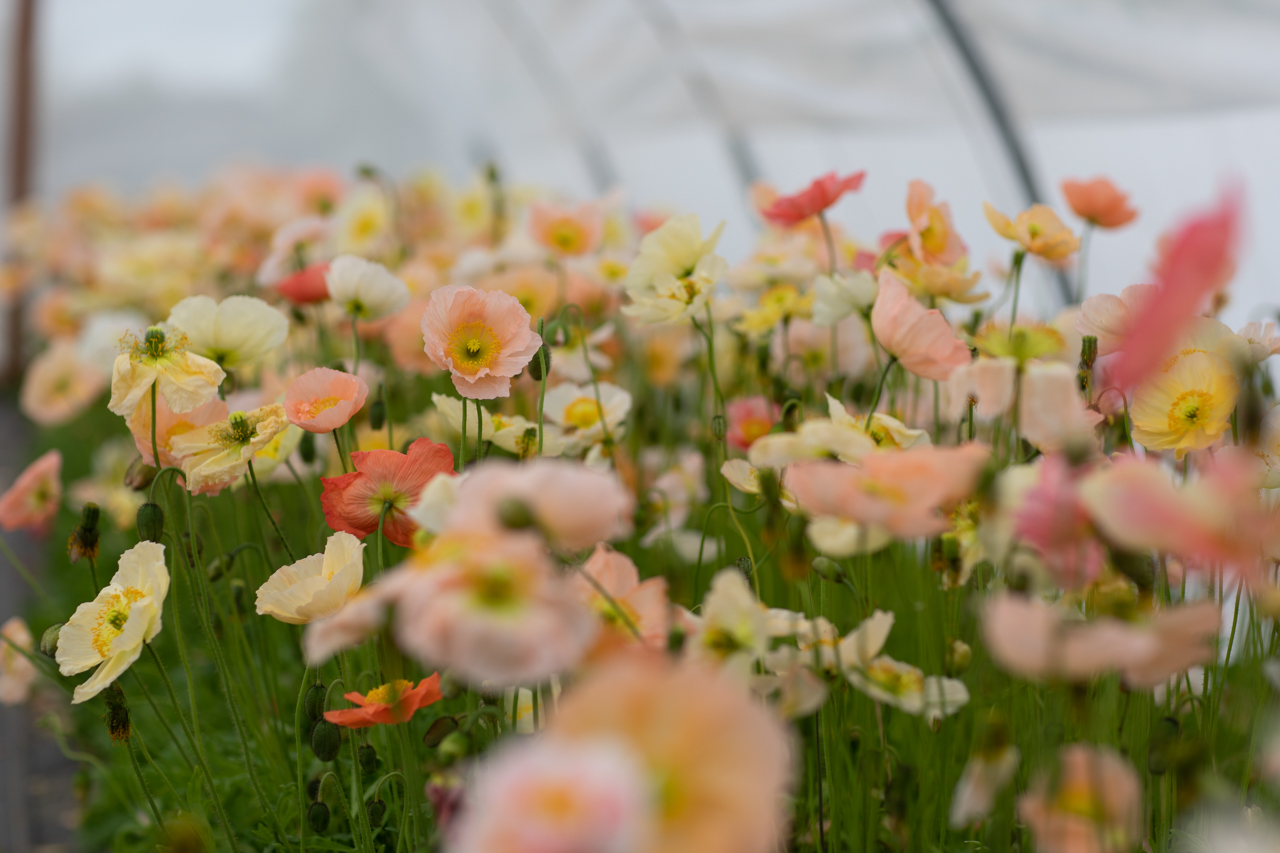 Iceland poppies
Iceland poppies
One of the most treasured spring flowers we grow, Iceland poppies have a citrusy scent. Their abundant flowering habit, stretching from early spring through midsummer, makes them a highly prized cutting garden addition.
Technically considered a hardy perennial, poppies can survive even the coldest winters, but because they don’t do well in high heat, they are often grown as a hardy annual or biennial. Here in Washington we sow them in the fall and overwinter them in an unheated hoop house for late-winter and early-spring blooms. ‘Pastel Meadows’ (pictured directly above and in previous photo, bouquet on right), is a magical blend of gold, peach, watermelon, blush, and white that is absolutely breathtaking. Compare it to Sherbet Mix, another favorite (previous photo, bouquet on left).
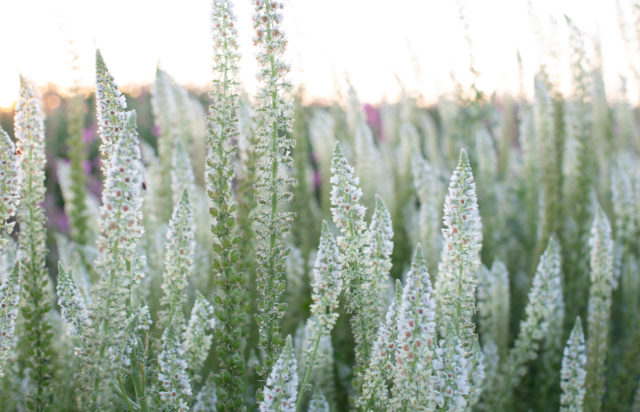 Mignonette
Mignonette
This relatively unknown flower has a rich history. Legend has it that Napoleon sent mignonette seeds from Egypt to France for his darling Empress Josephine in the early 1800s. If you haven’t tried this flower, I highly encourage you to grow it. It’s a great textural ingredient for bouquets and a favorite with pollinators, and it grows well in containers.
‘Garden Mignonette’ has long, snaking stems capped with creamy white flowers with a delicate orange center that smells like vanilla. Flowers fade, leaving behind green, lantern-like pods. ‘White Mignonette’ is more of an upright grower and its graceful stems are covered in glowing, snow-white flowers. This prolific bloomer also has a strong vanilla fragrance.
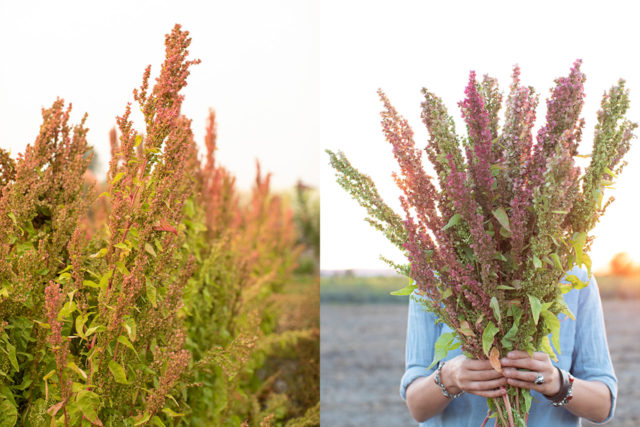 Orach
Orach
I discovered this fantastic plant in a friend’s veggie patch some years back and have been a huge fan ever since (the young leaves are edible and are often compared to spinach). Early in the season, harvest the leafy stems en masse for bouquets. If plants are left to grow, you’ll be rewarded with gorgeous seedy stems that are wonderful in large midsummer arrangements. We put together our own Caramel Apple Mix, which includes the best of both worlds—a brilliant Granny Smith green and rich chocolaty crimson.
‘Ruby Gold’ (pictured above) is another favorite variety shared with us by Frank Morton at Wild Garden Seed. Its eye-catching foliage is a glowing acid green, and stalks are streaked with cranberry. Later in the season, the seedy stems are a beautiful blend of dusty rose and sunbleached moss.
Pincushion flower
No cutting garden is complete without a broad swath of pincushion flowers (pictured above). They are easy to grow and wonderful for wedding work, and pollinators love them! There are so many wonderful varieties to choose from.
I love ‘Salmon Queen’, which boasts a very uncommon color—a beautiful salmon-pink hue that is a floral designer’s dream. ‘Summer Sangria’ is also a standout in the garden and its rich wine-colored blooms mix well with both vibrant tones and antiqued muted hues.
‘Starflower’ is another favorite. The flowers are a beautiful smoky periwinkle, but I grow them primarily for their seedpods. Once blooms give way, they leave behind light brown, orb-shaped seedpods that are great for drying and adding texture to arrangements. 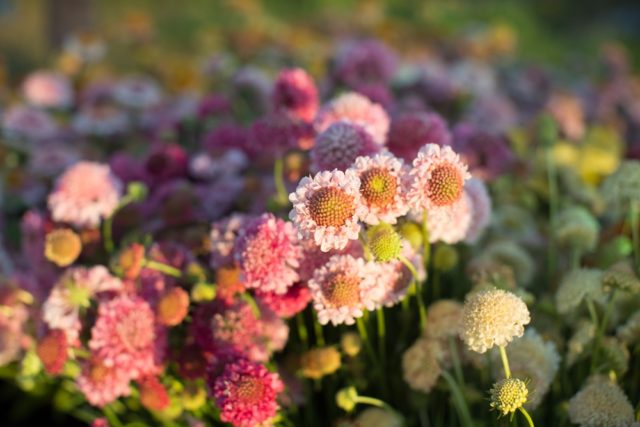 Pincushion flower
Pincushion flower
No cutting garden is complete without a broad swath of pincushion flowers (pictured above). They are easy to grow and wonderful for wedding work, and pollinators love them! There are so many wonderful varieties to choose from.
I love ‘Salmon Queen’, which boasts a very uncommon color—a beautiful salmon-pink hue that is a floral designer’s dream. ‘Summer Sangria’ is also a standout in the garden and its rich wine-colored blooms mix well with both vibrant tones and antiqued muted hues.
‘Starflower’ is another favorite. The flowers are a beautiful smoky periwinkle, but I grow them primarily for their seedpods. Once blooms give way, they leave behind light brown, orb-shaped seedpods that are great for drying and adding texture to arrangements.
 Queen Anne’s lace
Queen Anne’s lace
Hands down, Queen Anne’s lace (pictured above) is one of the most useful and productive filler flowers you can grow from seed. The more you pick, the more they flower. I plant hundreds of them every year and use every single stem. The lacy flower heads and crisp green-white color provide an invaluable backbone for late-spring and early-summer bouquets. Two of my favorite varieties are ‘Queen of Africa’, which has a delicate lacy quality, and ‘Green Mist’, which produces wide, umbel-shaped blooms over a long period of time.
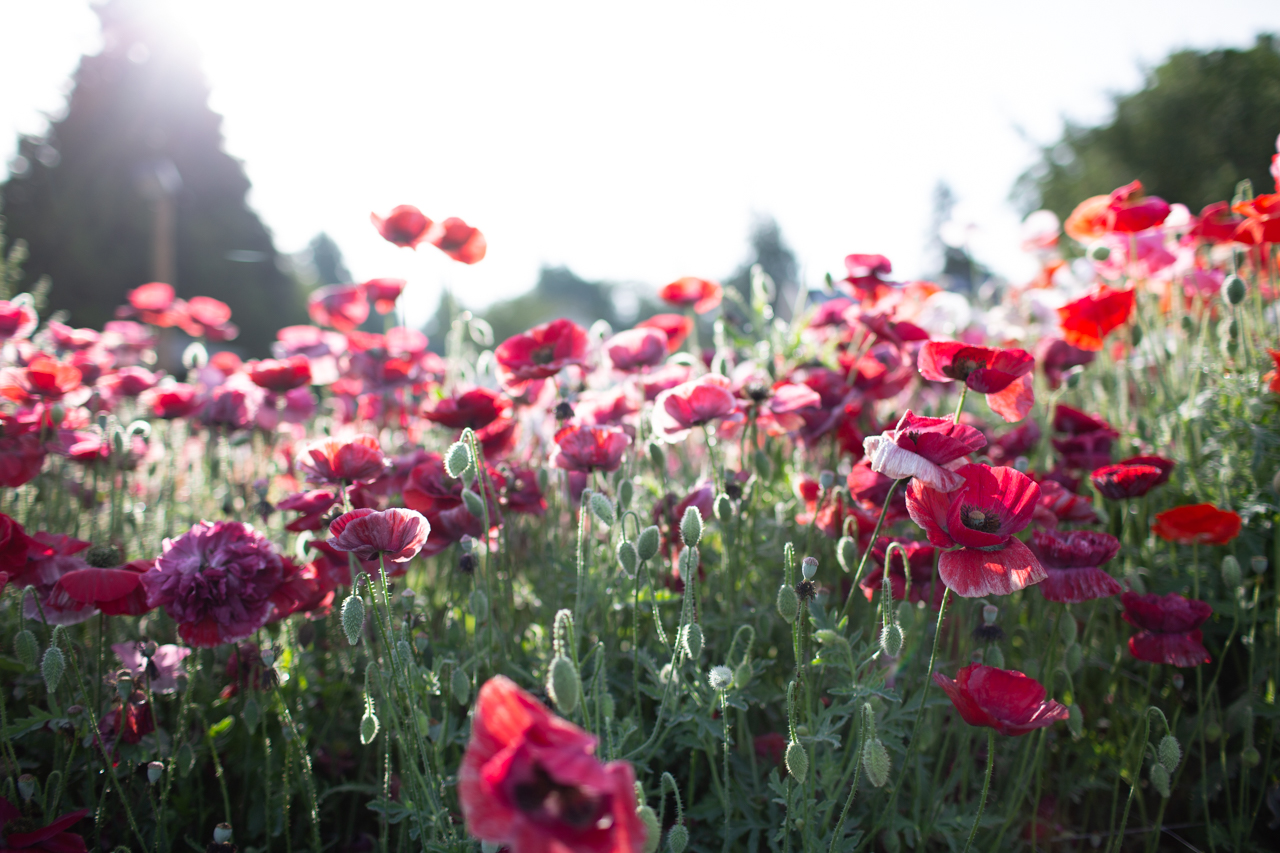 Shirley poppies
Shirley poppies
One of the most ephemeral and delicate flowers that we grow, Shirley poppies steal the heart of everyone who visits our garden. Pollinators love them too. After blooms drop, they leave behind adorable, chocolate-capped seedpods that can be used both fresh and dried.
The petite flowers on ‘Amazing Grey’ are the most haunting purple-gray hue, similar in color to ‘Nimbus’ sweet peas. We’ve never seen anything like it. Plants are vigorous and free-flowering. They’re perfect for both personal use and event work.
We consider ‘Pandora’ (pictured above) the sultry sister to ‘Amazing Grey’. Both varieties have a stunning purple-gray hue, but ‘Pandora’ is a metallic merlot. This vigorous and free-flowering mix features lots of double and ruffled blooms that flutter in the breeze.
‘Supreme’ flowers all summer long and is a mesmerizing mix of white, scarlet, soft pink, and watermelon-orange. The color mix reminds me of an old-fashioned silk kimono. Single and double flowers sway above clean, mint-green, serrated foliage. Each fuzzy stem shoots up at least a half dozen buds, and as soon as one flower fades, another comes up.
‘Mother of Pearl’ is a long-flowering, easy-to-grow mix in hues spanning dusty plum, cocoa-dusted white, cream with raspberry veining, and some muddy eggplant. Long stems, refined flowers, and adorable seedpods make this a perfect flower for wedding and wire work
 Snapdragons
Snapdragons
Snapdragons (pictured above) have always been some of the most productive early summer bloomers in my cutting garden. To get ultra-productive, long-stemmed cutting types, it’s essential that you select the proper ones and grow your own from seed.
Most of the bedding types you see at many garden centers are selected for their compact size and often treated with growth regulators to keep them compact—but they couldn’t be more different from the cut flower wonders that can be cultivated from seed.
 ‘Chantilly Light Salmon’ (pictured above, left) takes my breath away. No other snapdragon possesses so many desirable traits in one plant: beautiful warm colors, tall strong stems, delicate ruffled blooms, and the loveliest citrus scent. These beautiful butterfly-like blooms resemble upturned petticoats on dancing ladies. Flowers at the base of the stem are a soft glowing tangerine that transitions to apricot and melon-pink, giving this variety a beautiful ombre effect.
‘Chantilly Light Salmon’ (pictured above, left) takes my breath away. No other snapdragon possesses so many desirable traits in one plant: beautiful warm colors, tall strong stems, delicate ruffled blooms, and the loveliest citrus scent. These beautiful butterfly-like blooms resemble upturned petticoats on dancing ladies. Flowers at the base of the stem are a soft glowing tangerine that transitions to apricot and melon-pink, giving this variety a beautiful ombre effect.
‘Chantilly Light Pink’ (pictured above, right) is the first to bloom and is consistently our most-requested crop of early summer. Flowers are bubblegum pink with a darker watermelon throat that is creamy white on the reverse. The two-toned effect reminds us of cherry blossoms.
 The variety ‘Madame Butterfly’, often referred to as azalea snapdragon, is a double-petaled beauty adored for its pleasant perfume and long-lasting blooms. Because the tight shape is difficult for insects to pollinate, blooms last longer in the vase than single-flowered snapdragons. ‘Madame Butterfly Pink’ is a delightful warm bubblegum-pink variety with a lemony center.
The variety ‘Madame Butterfly’, often referred to as azalea snapdragon, is a double-petaled beauty adored for its pleasant perfume and long-lasting blooms. Because the tight shape is difficult for insects to pollinate, blooms last longer in the vase than single-flowered snapdragons. ‘Madame Butterfly Pink’ is a delightful warm bubblegum-pink variety with a lemony center.
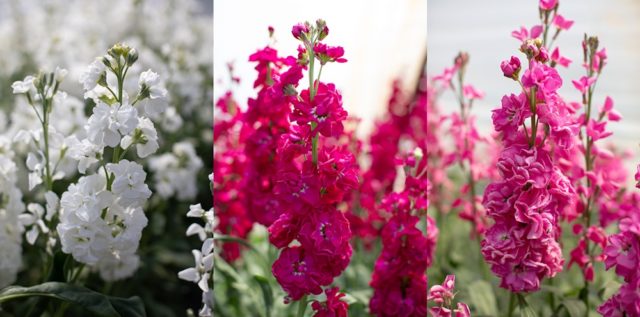 Stock
Stock
These prized plants thrive in cooler weather. Highly fragrant with a distinctive spicy scent and full, fluffy blooms, a few stems of these beauties make a big impact in both gardens and bouquets and fill the air with fragrance. Half of the plants will be single flowered (typical of stock varieties) and the other half double, so plant twice as many as you need.
Three varieties I love are ‘Avalanche Supreme’ (pictured above, left), with dense, snow-white blossoms that resemble lilacs and are well suited to wedding arrangements; ‘Pacific Crimson’ (pictured above, center), which has striking deep magenta blossoms; and ‘Katz Bright Rose’ (pictured above, right), whose towering stems are smothered in rose-pink blooms that have slightly lighter edges, giving them a lovely antique appearance.
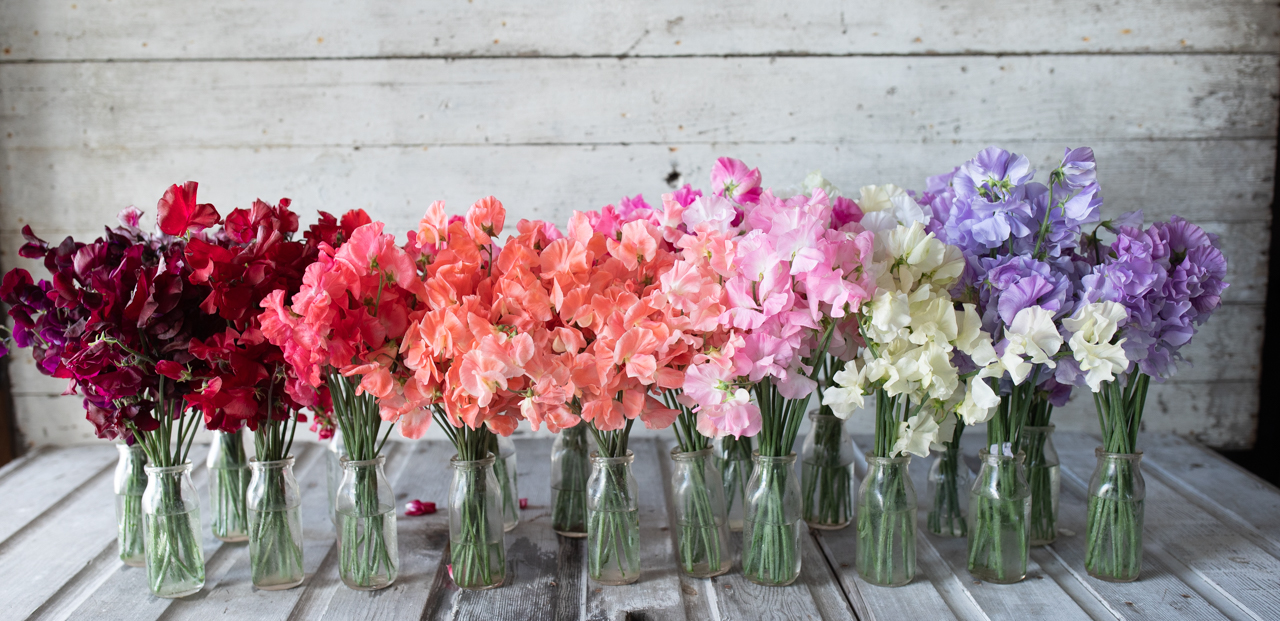 Sweet peas
Sweet peas
Last but certainly not least are sweet peas, one of my very favorite cut flowers. My flower journey began with the sweet peas in my Grammy’s garden, and they hold a special place in my heart. We have dozens of long-stemmed sweet pea varieties available—including varieties developed by renowned breeders Dr. Keith Hammett of New Zealand and Roger Parsons of England—and we’ve devoted an entire blog post to them.
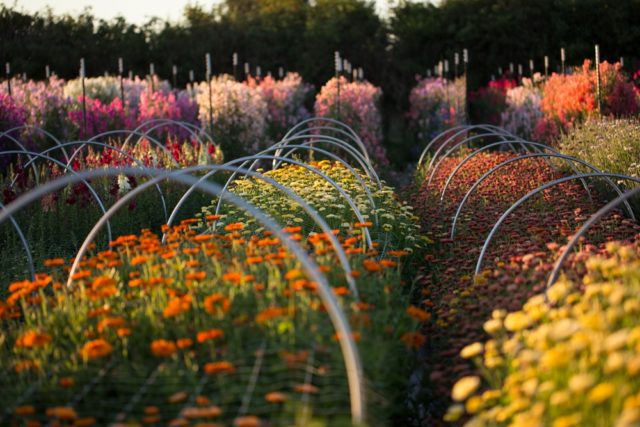 If you want to do a deep dive into hardy annuals, Virginia flower farmer Lisa Mason Ziegler wrote a wonderful little book all about them. I would highly recommend getting a copy of Cool Flowers: How to Grow and Enjoy Long-Blooming Hardy Annual Flowers Using Cool Weather Techniques if you want to master this topic.
If you want to do a deep dive into hardy annuals, Virginia flower farmer Lisa Mason Ziegler wrote a wonderful little book all about them. I would highly recommend getting a copy of Cool Flowers: How to Grow and Enjoy Long-Blooming Hardy Annual Flowers Using Cool Weather Techniques if you want to master this topic.
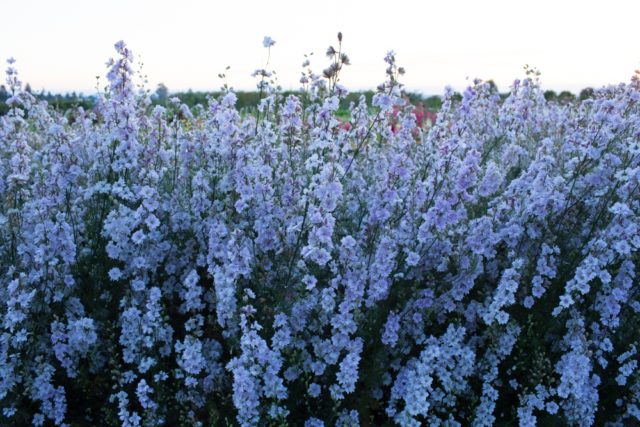 I would love to hear about your experience with this wonderful group of plants. Do you grow hardy annuals or plan to add them to your garden this coming season? If so, what are your favorite varieties, or what new treasures are you adding to your wish list?
I would love to hear about your experience with this wonderful group of plants. Do you grow hardy annuals or plan to add them to your garden this coming season? If so, what are your favorite varieties, or what new treasures are you adding to your wish list?
Please note: If your comment doesn’t show up right away, sit tight; we have a spam filter that requires us to approve comments before they are published.

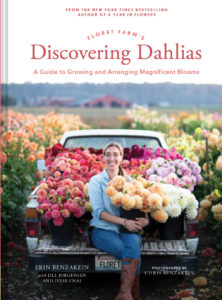
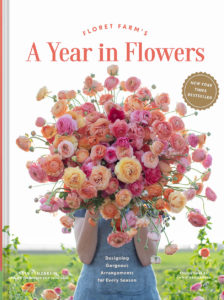


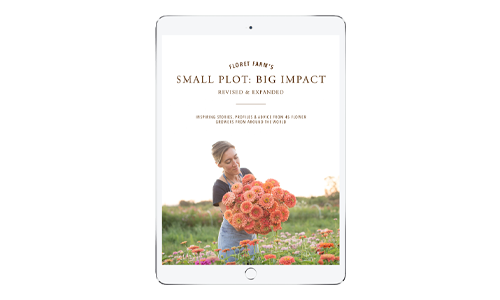
Diane on
I will try “winter sowing” the hardy annuals in January. What a joy to see God’s handy work!